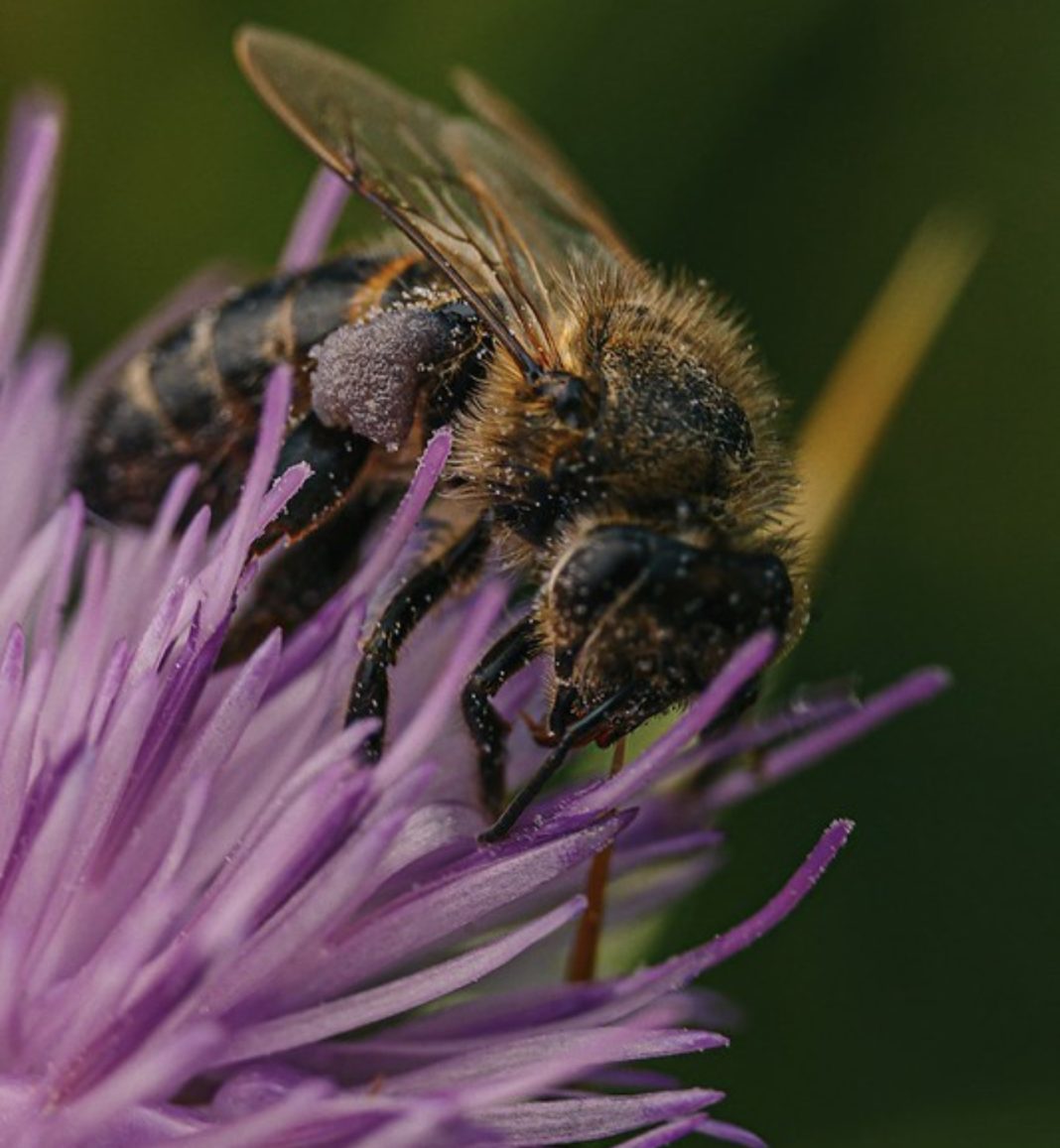By Fred Miller
U of A System Division of Agriculture
Editor’s note— This is the first in a series of three stories about research into the fascinating and agriculturally important world of bees. Today’s story is about a surprising discovery concerning the ancestry of Arkansas’ managed honeybee populations.
Honeybees in some areas of Arkansas have a direct, genetic link to the first European honeybees brought to America in the 17th century.
Allen Szalanski, professor and insect geneticist for the Arkansas Agricultural Experiment Station, said research to identify the distribution of pathogens in managed honeybee colonies throughout the state uncovered this hidden genetic history.
The Arkansas Agricultural Experiment Station is the research arm of the University of Arkansas System Division of Agriculture. Szalanski also has a teaching appointment in the Dale Bumpers College of Agricultural, Food and Life Sciences at the University of Arkansas.
Szalanski said the honeybees commonly used in managed colonies for pollination services and honey production are not native to North America. They were first imported from Europe in the 1600s by immigrants who treasured their honey and agricultural value. Those early honeybees, often called European dark honeybees or “German” honeybees, were darker in color than the more familiar, yellow-striped bees that are common today.
Entomologists call the ancestry of these European dark honeybees the “M” lineage, Szalanski said. They were the most common managed pollinators in the United States until the 19th century.
At that time, a Philadelphia-born clergyman and beekeeper named Lorenzo Lorraine Langstroth invented a modular beehive with moveable frames in which the bees build honeycombs. This construction, called a Langstroth hive, is still the most popular honeybee hive in use today by both professional and amateur beekeepers.
Langstroth, descended from Italian immigrants, preferred southern European honeybees, sometimes called Italian honeybees. He found them “gentler” and easier to manage than the German honeybees that were still common at that time.
While serving Congregationalist churches around Massachusetts, Langstroth studied the behavior of his bees and designed a revolutionary moveable frame hive based on a principle he termed the “bee space.” He published the results of his research in a book, “The Hive and the Honey-Bee,” which is still highly regarded by beekeepers.
Langstroth came to be known as the father of American beekeeping and through his influence, Szalanski said, the Italian, honeybee — part of what entomologists call the “C” lineage ± became the standard subspecies for beekeepers.
As the European dark honeybees became less desirable, Szalanski said, some of their colonies became feral, taking up residence in the wild. Szalanski said many beekeepers believed that, because they were no longer protected by managed beekeeping practices, those feral German honeybees would probably die out.
“Today, the queen breeders for managed colonies are nearly belong to the “C” lineage, familiar to observers as the yellow striped honeybees,” Szalanski said.
Arkansas has more than 3,800 registered beekeepers managing more than 61,000 honeybee colonies, according to the Arkansas Department of Agriculture. Most of the managed honeybee colonies in Arkansas are local “backyard” hives, Szalanski said.
Szalanski, while conducting a genetic survey of honeybees with former graduate student Dylan Cleary, found the genetic strain “M” lineage of those earlier European dark honeybees among numerous samples of “C” lineage honeybees.
Cleary, who graduated last year with a Ph.D. in entomology, sent collection kits to registered Arkansas beekeepers. She and Szalanski conducted genetic tests on the samples that were sent back.
“We received samples from 110 beekeepers around the state,” Szalanski said. “The samples represented 540 colonies from 47 counties.”
Their goal was to identify pathogens and parasites that infected managed honeybees in the state. But they also tested mitochondrial DNA from the bees to identify the maternal lineages, or matrilineal DNA. Mitochondrial DNA is handed down through the mother and is often used to track ancestry in animals and humans.
Szalanski said they identified four lineages in the Arkansas honeybees. The vast majority were the “C” lineage that includes the Italian honeybees.
They also found smaller numbers of “A” lineage, designating Africanized honebees, and “O” lineage, known as oriental honeybees. But the surprise was the discovery that some of those Arkansas bees had mitochondrial DNA from those earlier European dark honeybees that were the standard domesticated pollinators for 200 years.
Szalanski said this research will be published in the Journal of Apicultural Research later this year.
Szalanski believes the European dark honeybee lineage became part of managed honeybee colonies when beekeepers gathered a swarm — a bee mating behavior — from a feral colony into a hive.
“It can be difficult for a beekeeper to determine the source of a honeybee swarm,” Szalanski said. “It can be from their own or a neighbors managed colony, or from one that has been feral for a long time. We really don’t know how many feral colonies exist.”
“This research provides evidence that descendants of these ‘M’ lineage honeybees still exist in Arkansas,” Szalanski said.
Why European dark honeybee descendants still exist in Arkansas is a mystery. “Do they survive better in Arkansas’ climate?” Szalanski asked.
It’s not uncommon for some managed honeybee swarms to become established as feral colonies in hollow tree cavities or other favorable environments. But Szalanski said entomologists expected that feral European dark honeybees would be long gone, likely wiped out by Varroa mites, the most important parasite of domesticated bees.
“Descendants of these ‘M’ lineage honeybees are rare or non-existent in northern states, but not in Arkansas,” Szalanski said. “They may have become adapted to the environment in Arkansas. We need more study to understand why they exist here.”
To learn more about Division of Agriculture research, visit the Arkansas Agricultural Experiment Station website: https://aaes.uada.edu/. Follow us on Twitter at @ArkAgResearch and on Instagram at @ArkAgResearch. To learn more about the Division of Agriculture, visit https://uada.edu/. Follow us on Twitter at @AgInArk.






